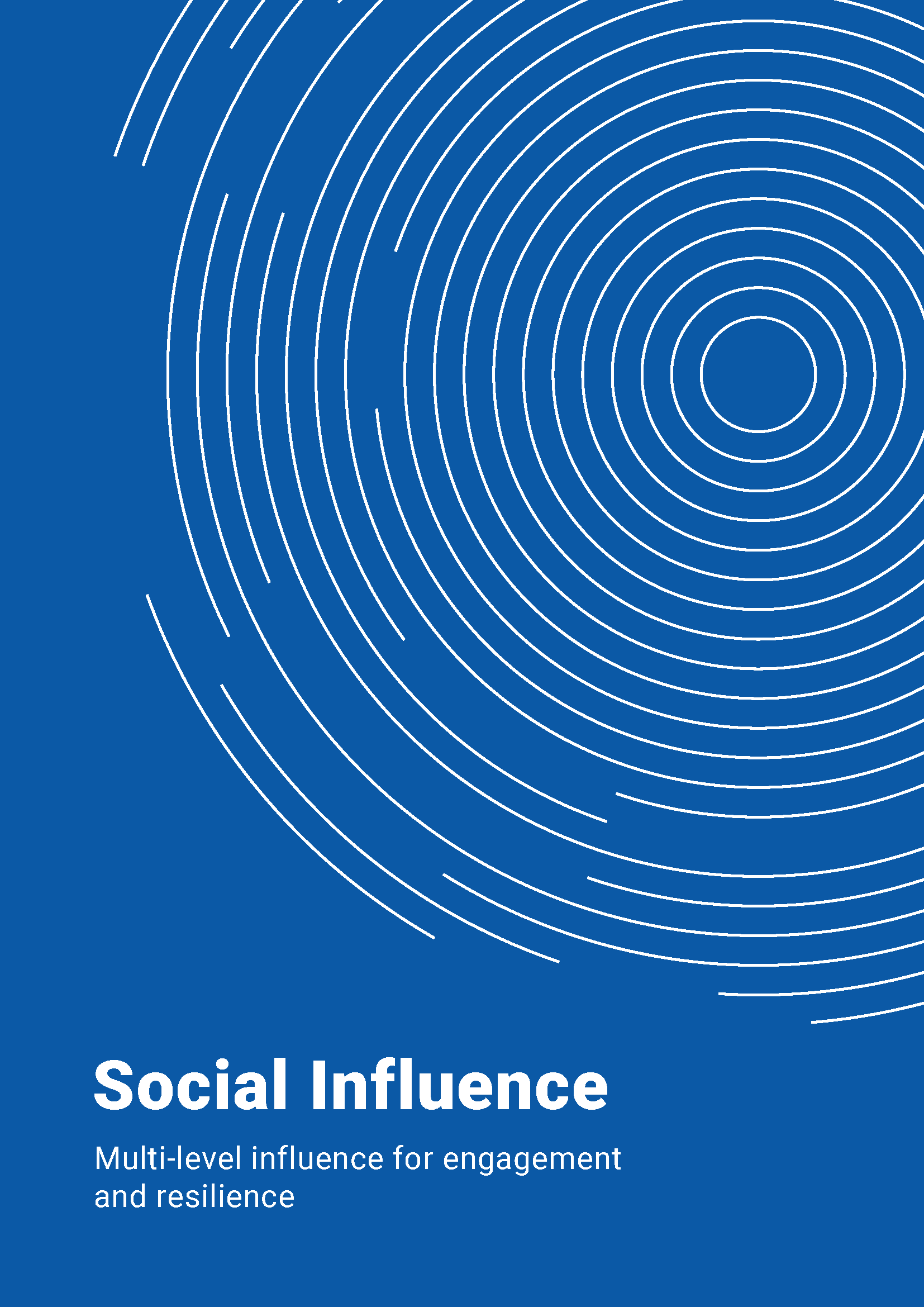Preface
Despite its apparent common sense meaning, influence is a difficult concept to pin down. Influence may appear straightforward: the power to cause an effect, or practice of doing so. However, influence is complex. It occurs at various scales, individual to international. It includes multiple actions and actors. The relationships between causes and effects can be tenuous, and challenging if not impossible to determine.
Influence can therefore be tough to either understand or undertake. This report seeks to provide clarity, rigor and sophistication to understanding influence conceptually and in practice. In doing so, it addresses these questions:
What is influence? How does it work? What makes some people, groups, and institutions influential? What leads to some messages being more, or less, influential? How can influence efforts be better planned, implemented, and evaluated?
The answers will be of interest for influence practitioners, such as those working in public affairs, public diplomacy, and international engagement, as well as those engaged with addressing concerns arising from malign and coercive influence activities, such as disinformation and foreign interference campaigns.
The report emphasises that influence occurs at multiple, inter-related, levels. At the micro-level, the conclusions of the report draw on the fields of social psychology; at the meso level, on sociology; and at the macro level, on international relations. The report does not presume advanced training or knowledge in these fields.
Influence efforts typically target audiences, individually or in groups, sometimes referred to as publics, up to the level of entire populations. This report underlines that these target audiences are active interpreters of influence messages, not passive recipients.
Central to our analysis is the need to appreciate the ways that target audiences are diverse, complex, and dynamic. Understanding target audiences, and their contexts, is an essential element of planning for influence activities (or seeking to increase resilience to malign influence).
This report will assist those engaged in target audience analysis by providing a conceptual framework upon which such analysis is undertaken, and consequent planning decisions are made. The aim is to promote best practice in target audience analysis, and to stress its importance.
In part this emphasis arises out of a concern that target audience analysis is not given sufficient weight in the planning of influence activities, which often focus on the technical elements (such as the use of social media platforms, bots, deep fakes, and artificial intelligence) and the content of messages (the images and narratives).
The effectiveness of such technologies and content is made more likely if they are supported by adequate research on, and understanding of, the target audience.
Assessing effects is the topic of a companion report, titled Influence Indicators. The companion report addresses measures of performance, impact, and effect in ways that aim to be usefully applied to the evaluation of influence activities.
